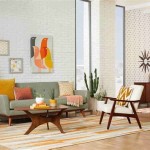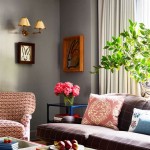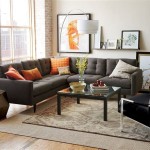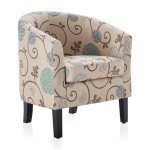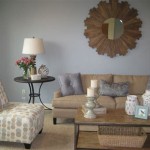Bed In The Living Room: Creative Solutions for Small Spaces
Incorporating a bed into a living room presents a unique set of challenges, particularly in smaller dwellings where space optimization is paramount. The need for a multifunctional area that seamlessly transitions between daytime social space and nighttime relaxation zone requires careful planning and innovative design solutions. This article explores various strategies for integrating a bed into a living room, addressing both aesthetic and practical considerations.
Maximizing Vertical Space: Loft Beds and Elevated Platforms
One effective method for accommodating a bed in a living room is to utilize vertical space through the installation of a loft bed. This design principle allows the bed to be positioned above the main living area, freeing up valuable floor space below. The area beneath can then be used for various purposes, such as a home office, a seating area, or even storage. The accessibility of the bed is achieved through a ladder or staircase, carefully integrated into the overall design.
Loft beds are not without their constraints. Ceiling height is a critical factor to consider; low ceilings may make a loft bed impractical, as it could result in limited headroom for both the bed occupant and anyone using the space below. Conversely, excessively high ceilings may necessitate a more elaborate and potentially expensive structure. The structural integrity of the existing building must also be assessed to ensure it can support the weight of the loft bed and its occupant. A professional contractor should be consulted to evaluate these factors before embarking on a loft bed project.
Beyond the traditional loft bed, elevated platforms offer another approach to utilizing vertical space. Instead of a full-fledged loft structure, a raised platform can be constructed, creating a distinct area for the bed while still maintaining some connection to the living room. This option is particularly suitable for those who prefer a less enclosed sleeping space or who are hesitant about the potentially confining nature of a loft bed.
The platform can be customized to various heights depending on the desired level of separation and the amount of storage needed underneath. Drawers, shelves, or even a small closet can be integrated into the platform structure. As with loft beds, ensuring the structural stability of the platform is crucial, and professional consultation is recommended.
Camouflaging the Bed: Murphy Beds and Fold-Away Designs
For individuals who prioritize discretion and a seamless transition between living and sleeping areas, the Murphy bed presents a compelling option. Also known as wall beds, Murphy beds can be folded away into a cabinet or wall recess when not in use, effectively disappearing from the living room during the day. This design feature is particularly advantageous in very small apartments or studios where every square inch of space counts.
Modern Murphy beds are often designed with sophisticated mechanisms and integrated furniture, such as bookshelves, desks, or even sofas. This allows the Murphy bed to serve a dual purpose, providing both sleeping and functional living space. The integration of these elements can significantly enhance the practicality and aesthetic appeal of the living room.
The installation of a Murphy bed requires careful planning and attention to detail. The wall into which the bed is recessed must be structurally sound and capable of supporting the weight of the bed and its mechanism. Professional installation is typically recommended to ensure proper functionality and safety. Furthermore, the choice of mattress is important; a thinner, lighter mattress is generally preferred for ease of folding and storage.
Beyond Murphy beds, other fold-away designs offer similar space-saving benefits. Some manufacturers offer beds that can be folded into ottomans, benches, or even room dividers. These designs provide a more flexible approach to accommodating a bed in a living room, allowing for easy reconfiguration of the space as needed. The choice of fold-away design will depend on individual preferences and the specific spatial constraints of the living room.
Creating Visual Separation: Room Dividers and Strategic Furniture Placement
Even without resorting to elaborate structural modifications, it is possible to effectively integrate a bed into a living room by creating visual separation using room dividers and strategic furniture placement. This approach focuses on defining distinct zones within the shared space, creating a sense of privacy and functionality for both the living and sleeping areas.
Room dividers come in various forms, from freestanding screens and curtains to bookshelves and large plants. The choice of room divider will depend on the desired level of privacy and the overall aesthetic of the living room. Opaque screens or curtains provide the most privacy, while translucent or open-weave dividers allow light to pass through, maintaining a sense of openness.
Bookshelves can serve as both functional storage and effective room dividers. A strategically positioned bookshelf can create a visual barrier between the bed and the living area, while also providing storage for books, decorative items, and other personal belongings. The bookshelf can be oriented to face either the living room or the sleeping area, depending on the desired focus and aesthetic.
Large plants can also be used to create a natural and visually appealing room divider. Potted plants, particularly those with dense foliage, can effectively screen off the bed from the living area, creating a sense of privacy and tranquility. This approach is particularly well-suited for individuals who appreciate a more organic and nature-inspired aesthetic.
Strategic furniture placement can further enhance the visual separation between the bed and the living area. Positioning a sofa or armchair in front of the bed can create a natural barrier, while also providing additional seating in the living room. Similarly, placing a coffee table or rug in the living area can help to define the space and separate it from the sleeping area. The arrangement of furniture should be carefully considered to maximize both functionality and aesthetic appeal.
Lighting plays a crucial role in defining the different zones within the shared space. Ambient lighting can be used to illuminate the entire living room, while task lighting can be focused on specific areas, such as the reading chair or the desk. Dimmable lights can be used to create a more relaxed and intimate atmosphere in the sleeping area. Additionally, the color temperature of the light can be adjusted to create different moods and enhance the separation between the zones.
The color palette of the living room and sleeping area should also be carefully considered. Using different colors or patterns in the two areas can help to visually separate them and create a sense of distinctiveness. However, it is important to ensure that the colors complement each other and create a cohesive overall aesthetic. Neutral colors can be used as a base, with pops of color added to highlight specific areas or features.
Ultimately, the integration of a bed into a living room is a highly personal and context-specific endeavor. The optimal solution will depend on individual needs, preferences, and the specific characteristics of the space. By carefully considering the various strategies outlined in this article, individuals can create a functional and aesthetically pleasing living space that seamlessly accommodates both living and sleeping activities.
Consideration must be given to the lifestyle of the occupant. Is the space used primarily for sleeping or socializing? The answer to this will dictate the priority of design decisions. If social gatherings are frequent, the bed should be easily concealed and the living area given precedence. If the occupant primarily uses the space for sleeping and quiet relaxation, the bed area can be given more prominence and emphasis.
Another factor to consider is the level of noise and light pollution in the living room. Installing soundproofing materials, such as thick curtains or acoustic panels, can help to reduce noise levels and create a more peaceful sleeping environment. Similarly, blackout curtains or blinds can be used to block out light and create a darker sleeping space. Addressing these factors can significantly improve the quality of sleep and enhance the overall comfort of the living room.
Finally, it’s important to consider the accessibility and maintenance of the bed area. Ensuring easy access to the bed for making and changing linens is crucial. Similarly, providing adequate ventilation and cleaning the bed area regularly can help to maintain a healthy and comfortable sleeping environment. Paying attention to these details can ensure that the bed in the living room remains a functional and enjoyable space for years to come.

Clever Ways To Design A Living Room And Bedroom Combo

14 Living Room Bedroom Combo Ideas To Optimize Floor Space Coco Lapine Designcoco Design

16 Best Bedroom In Living Room Ideas Home Interior Design

17 Amazing Living Room Bedroom Ideas You Need To See The Decor Forum

How Do I Integrate A Bed In Living Room Best 5 Practical Tips

Living Room And Bedroom Combined Coco Lapine Designcoco Design

We Put A Bed In Our Living Room And Here S What Happened

It Can Work When Your Living Room Is Bedroom

47 Best Daybed In Living Room Ideas Guest Bedroom

7 Best Ideas To Turn Living Room Into Bedroom

